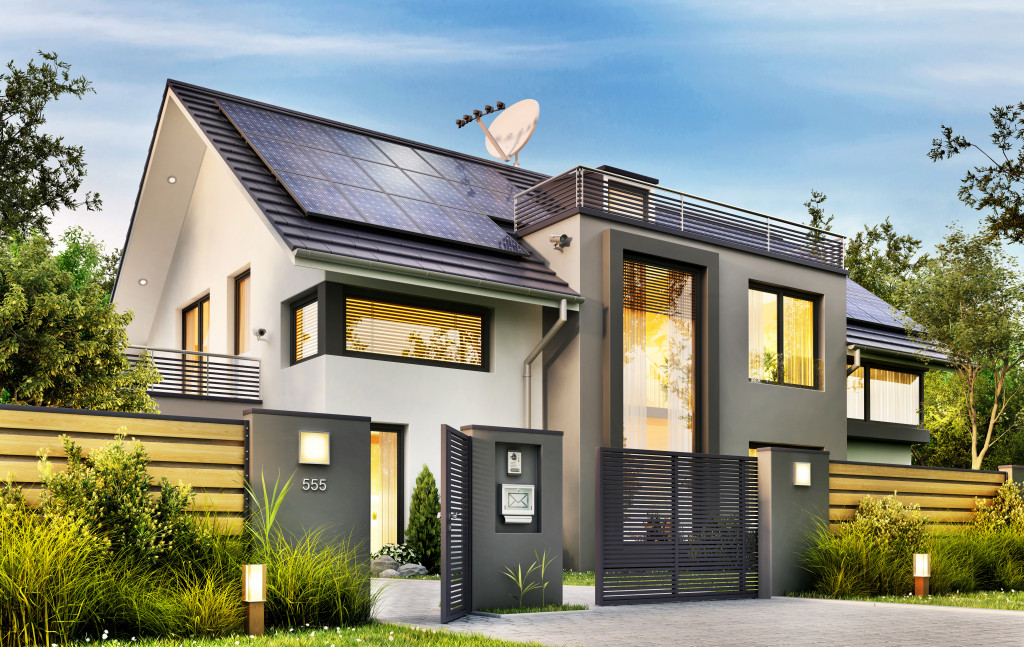In the past, environmental friendliness was a subject rarely mentioned, and those who voiced their concerns over environmentally harmful practices were immediately categorized as some sort of fringe element, “radical greenies” who were out to destroy our way of life with their ill-conceived agenda.
Since those times of green marginalization, the wheel has turned full circle. In today’s world, “going green” and engaging in environmentally friendly practices are considered the norm rather than the exception. Moreover, mass media has catapulted this movement into the mainstream. As a result, climate change and environmental friendliness have become major talking points dominating the public and political agenda.
The economic benefits of building green
The fundamental factors pushing the expansion of environmentally friendly buildings are client demand and the overall desire to build healthier buildings. However, the economic advantages of these structures cannot be overlooked. Constructing an environmentally friendly home will mean using alternative sources of energy, which will result in fewer and cheaper monthly utility bills. Using environmentally friendly building materials will also result in greater durability, which will, in turn, entail fewer and cheaper maintenance and repair costs. The combined effect is a faster return on investment and an increase in home value.
Traditionally, there has always been a debate about going green versus jobs. The naysayers argue that going green will cost millions of jobs and billions of revenue dollars. In contrast, the going green supporters argue that job loss in the fossil fuel and related industries will be offset by new jobs in the green sector. In fact, it is estimated that a greener economy could create 24 million new jobs globally by 2030.
Using recycled and zero-waste products
With the newfound popularity and public emphasis on going green, it is now possible to find a recycled counterpart to almost every traditional building material. For example, manufacturers now produce 100% recycled countertops for the kitchen. In addition, recycled steel has been used as an alternative to wood when making frames, recycled content doors, and recycled roofing. There have been great advances made in recycled building materials, and one perfect example of this is composite building material. These are made of recycled waste, and their production removes more waste material than it takes to produce them, making these products waste negative.

Building a healthy home and a healthy life.
Green home builders often cite the desire to provide their families with a healthy home environment as one of their main reasons for going green. One of the biggest factors influencing the level of healthiness in the home is air quality. Going green has been proven to improve air quality in the home. This improvement is attributed to the non-toxic materials used in environmentally friendly buildings, along with purer ventilation systems and more effective air purifiers.
To ensure the highest indoor air quality, most ventilation systems use three techniques. These are sanitation, air duct cleaning, and air purification. Sanitation is normally conducted by pumping a sanitizing fogging solution into the air duct. Meanwhile, many companies offer air duct cleaning services to help homeowners thoroughly remove dust and debris that have accumulated inside the air duct. Lastly, UV air purifying systems use ultraviolet light to eliminate mold and mildew.
Environmentally friendly building materials.
Here are some environmentally friendly building materials that are available for those who would like to build environmentally friendly homes.
One of the main areas where environmentally friendly building materials are used is in the production of countertop surfaces used in kitchens and bathrooms. Some of the different types of material used include recycled glass, waste aluminum and copper flake, solid surface scrap, and recycled acrylic quartz. In addition, some composite materials are made from recycled sheets of paper.
Other areas where environmentally friendly building products are used are in constructing cabinets. The emphasis here is on replacing wood to help reduce the exploitation of dwindling timber reserves. The main building materials used are non-toxic bamboo, substitute wood, and composite recycled wood.
Going green may be the new trend and even the new political agenda. However, it is also a philosophy—a way of life—based on living in harmony with the environment rather than exploiting nature. A key part of this philosophy is the choices we, as individuals, make. This includes the way we live our lives on a daily basis, as well as the choices we make, such as choosing to build environmentally friendly buildings. Perhaps, most importantly, we can choose to prioritize going green, and if not for us, then for future generations.






